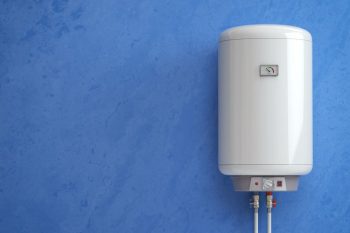
Air conditioning is a necessity in many homes and businesses, especially during the hot summer months. One of the key components of an air conditioning system is the AC contactor, a switch that controls the flow of electricity to various parts of the unit. However, like any other component, an AC contactor can fail, leading to problems with the system’s operation. In such cases, it’s crucial to know how to test your AC contactor to determine if it’s the cause of the issue. In this comprehensive guide, we’ll walk you through the process of testing an AC contactor, the signs of a faulty contactor, and the steps to replace it if necessary.
To test an AC contactor, first, power off the air conditioner and locate the contactor in the control panel. Take a photo of the wiring for reference, then disconnect the wires. Using a multimeter set to the ohms or continuity setting, test the coil terminals – a reading between 5 and 20 ohms indicates a functioning coil. Test the contacts by placing the multimeter leads on the corresponding line and terminal contacts – a reading of 0 ohms suggests the contacts are in good condition. Reconnect the wires, reassemble the contactor, and power on the air conditioner to check its operation.
What is an AC Contactor?
Before we delve into the testing process, it’s essential to understand what an AC contactor is and why it’s critical to the functioning of your air conditioning system. An AC contactor is an electrically controlled switch used for switching a significant power circuit, like the air conditioner unit. It controls the flow of electricity to the unit’s compressor, condenser, and motors. When the thermostat signals the start of a cooling cycle, it sends a low voltage signal to the contactor, which then closes its contacts, allowing electricity to flow to the motors. Once the desired temperature is reached, the contactor opens its contacts, disconnecting the flow of electricity and turning off the unit.
Signs of a Faulty AC Contactor
Knowing the signs of a faulty AC contactor can help you determine when to conduct a test. Some of the most common signs include:
- Chattering or humming sounds from the compressor.
- The AC unit not turning on or off correctly.
- Blackened, charred, or melted contactor casing.
- Pitting on the contact points.
- The AC unit running continuously, even when it’s turned off.
- Unusual noises, like humming or buzzing, coming from the contactor.
If you notice any of these signs, it’s advisable to conduct a test or consult a professional HVAC technician to diagnose and resolve the issue.
Tools Needed for Testing an AC Contactor
To test an AC contactor, you will need a multimeter or volt-ohmmeter. This device is used to measure electrical resistance, voltage, and continuity across the contactor’s terminals and coil.
How to Test an AC Contactor
Now, let’s dive into the step-by-step process of testing an AC contactor:
- Power off the air conditioner: First, ensure the air conditioner is turned off and disconnected from the power source. This step is crucial for your safety and to prevent damage to the AC unit.
- Locate the contactor: Open the control panel on the side of the condenser unit and locate the contactor. It’s usually a vertically positioned black rectangle with several colored wires connected to it.
- Take a photo of the wiring: Before disconnecting any wires, take a picture of the wiring connections. This will help you reconnect them correctly later.
- Remove the wires: Unscrew the contactor and carefully disconnect the wires. Remember to keep them connected while unscrewing the contactor.
- Set the multimeter: Next, set your multimeter to the ohms or continuity setting.
- Test the coil: Place the multimeter leads on the coil terminals (usually marked A1 and A2). The multimeter should display a reading between 5 and 20 ohms. If the reading is outside this range, the coil may be faulty.
- Test the contacts: Test each set of contacts (L1-to-T1, L2-to-T2, etc.) by placing the multimeter leads on the corresponding line (L) and terminal (T) contacts. The multimeter should read 0 ohms or close to it when the contacts are closed. If the reading is not 0 ohms, the contacts may be worn or damaged.
- Reassemble the contactor: Once you’re done with the testing, reconnect the wires according to the photo you took earlier and screw the contactor back into place.
- Power on the air conditioner: Finally, turn the air conditioner back on and check if it’s functioning properly.
Remember, safety comes first. Always ensure the power is off before starting any tests and wear appropriate personal protective equipment. If you’re unsure about any steps or encounter issues, consult a professional HVAC technician for assistance.
When to Call a Professional
While testing an AC contactor is a task that many homeowners can handle, certain situations warrant professional help. If the test requires specialized knowledge or equipment, or if the test results are needed for legal or official purposes, it’s best to hire a professional. Also, if the extent of the damage or issue is significant or if user error could affect the accuracy of the test, professional testing is the more reliable option. Furthermore, if the test involves health risks, such as mold exposure or asbestos contamination, it’s essential to hire a professional to ensure the safety and health of the household.
Conclusion
Testing an AC contactor is a crucial skill for homeowners, especially those living in hot climates where the air conditioner is in constant use. By understanding what an AC contactor is, how it functions, and how to test it, you can troubleshoot your AC unit and ensure it’s operating at peak efficiency. However, always remember that safety comes first. If you’re unsure about any steps or if the issue is beyond your skills, don’t hesitate to call a professional HVAC technician for help.
Frequently Asked Questions
What is the function of an AC contactor in a heating system?
Just like in a cooling system, an AC contactor in a heating system is responsible for controlling the flow of electricity to the unit’s components. When the thermostat signals the start of a heating cycle, it sends a low voltage signal to the contactor, which then closes its contacts, allowing electricity to flow to the system’s motors. Once the desired temperature is reached, the contactor opens its contacts, disconnecting the flow of electricity and turning off the unit.
Is it normal for the AC contactor to make a humming sound?
Yes, it’s normal for the AC contactor to make a humming sound when it’s energized, i.e., when it’s supplying power to the air conditioner. However, if the humming sound is loud, constant, or accompanied by chattering noises, it may indicate a problem with the contactor.
What causes an AC contactor to fail?
There are several reasons why an AC contactor may fail. These include normal wear and tear, electrical problems such as power surges or short circuits, a malfunctioning thermostat, poor maintenance, or a dirty or corroded contact point.
How often should an AC contactor be replaced?
The lifespan of an AC contactor can vary depending on the quality of the component, the conditions in which it operates, and how well the AC system is maintained. However, on average, an AC contactor should be replaced every 5 to 7 years. If you notice any signs of a faulty contactor before this time, it’s advisable to have it checked and replaced if necessary.
Can a faulty AC contactor increase my energy bills?
Yes, a faulty AC contactor can lead to an increase in energy bills. If the contactor is stuck in the closed position, it will allow electricity to continuously flow to the AC unit, even when it’s not needed, leading to increased energy consumption. On the other hand, if the contactor is unable to close properly, the AC unit may not turn on at all, causing the system to work harder and consume more energy to maintain the desired temperature.












